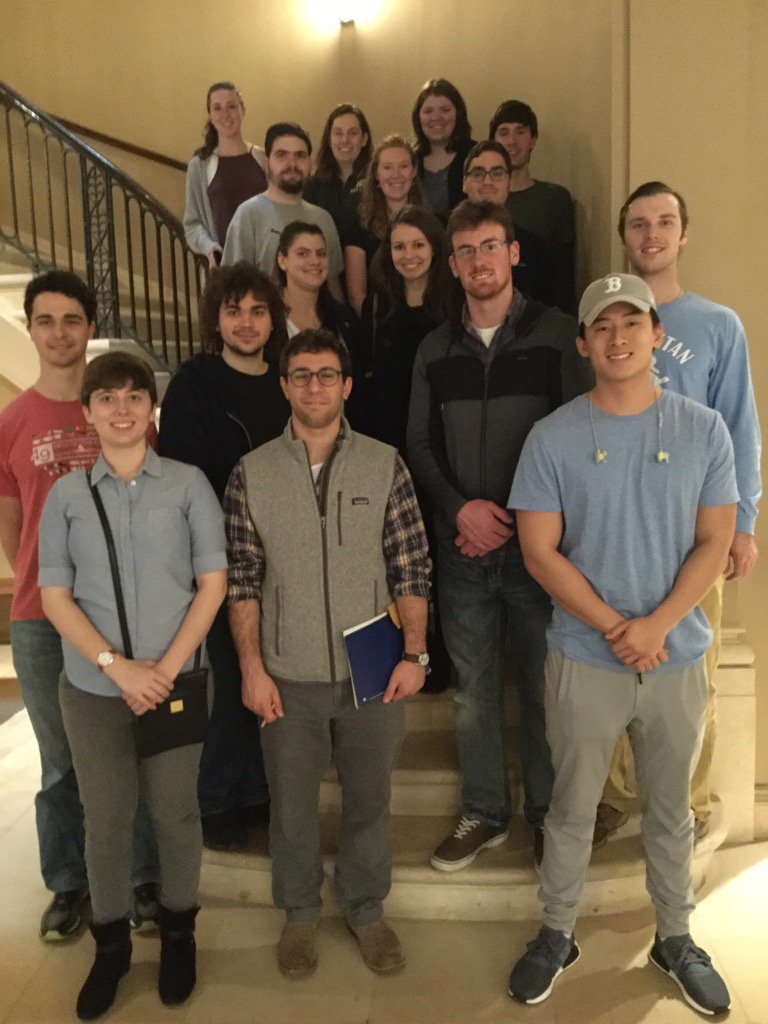By Kelsey Littlefield ‘17
On Saturday, February 25, fourteen students from Professor Neel Smith’s “Archaeology and Time” course explored the “Time and Cosmos in Greco-Roman Antiquity” exhibit, curated by the Institute for the Study of the Ancient World, an affiliate of New York University (NYU).

Christine Roughan ’14, a Classics major and physics minor while at the College and currently a Ph.D. candidate at NYU, gave Prof. Smith’s class a private docent tour upon arrival. The exhibit allowed students to connect their previous knowledge of timekeeping methods garnered from the course with practical, technologically advanced possessions from antiquity. Some featured objects in the exhibit included numerous public and portable sundials (a way for the ancients to calculate the passage of time by observing the shadows cast by the sun); the Roman calendar, or fasti, carved in marble; surveying instruments; and other tools for timekeeping.
On the tour Roughan highlighted the importance of astrology and the zodiac symbols that we know in modernity as a way for ancient Greeks and Romans to reflect on time and the universe’s dual partnership that had the power to shape the environment and destiny.
“Archaeology and Time” is an advanced archaeology course that aims to understand what kinds of evidence and reasoning lie behind chronological claims about events, such as Xerxes invading Greece in 480 B.C. and Mount Vesuvius erupting precisely on Aug. 24, A.D. 79, by means of literary/historical sources and other dating methods. In addition, the course allows students to blend theoretical reasoning with hands-on research that will culminate in a research project that assesses and seeks to explain a chronological problem through the use of primary evidence.


